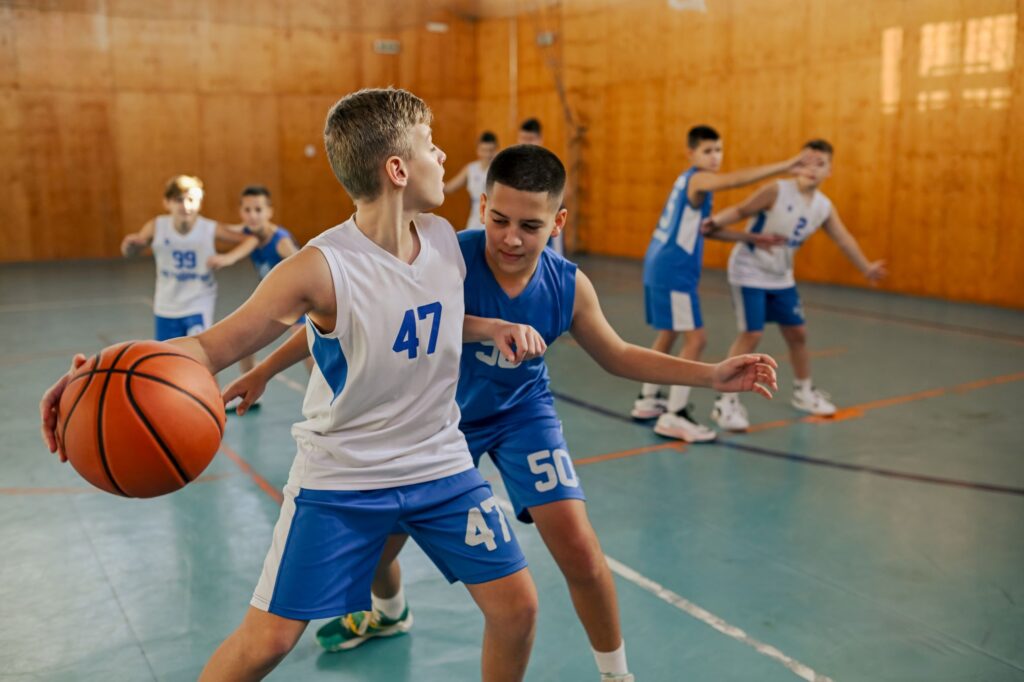Legislature unanimously supported passage of bill, urge Governor Ayotte to sign into law
Cardiac arrest is the leading cause of death for student athletes associated with participation in school athletic events or practices. Of the 23,000 children who will experience cardiac arrest outside of a hospital, about 40% of these events are sports-related. When on the playing field, having a plan in place to enable athletic staff to quickly and correctly respond to a cardiac emergency can save lives.

Having a Cardiac Emergency Response Plan (CERP) – which includes CPR training and having an Automated External Defibrillators (AED) on site – can help save a life or prevent further injury. Knowing so many adult family members attend sporting events as spectators, their lives could be saved as well.
When cardiac arrest occurs outside of a hospital, survival more than doubles when people nearby take action by dialing 911, starting CPR and using a publicly available AED compared to waiting for emergency responders to arrive. The safety of students, school staff and visitors can be enhanced with a coordinated, practiced response plan where school CERP teams are trained and empowered to administer lifesaving care until emergency medical services arrive.
“From my experience as a cardiologist at Elliot Hospital, I can attest that few things in life happen as quickly as cardiac arrest, leading to tragedy and devastation if people nearby are not prepared to take action,” said Stephen Hanlon, MD, cardiologist, Elliot Hospital and New Hampshire’s American Heart Association Board President. “In the hospital, we’re trained to address these situations, but every year, more than 356,000 people in the United States experience cardiac arrest outside of a hospital. Currently, about 90% of those people won’t survive.”
Unfortunately, not all schools in New Hampshire are required to have the plans, training and equipment in place for when a cardiac emergency occurs. To help solve this, the American Heart Association is working with the New Hampshire legislature to urge our state to require all schools to have a CERP in place for school athletic facilities.
“As an advocate for the American Heart Association, I’m so excited the New Hampshire Legislature unanimously supported passage of the bill to establish CERPs for school sports facilities,” said Dr. Hanlon. “I hope you will join me in contacting Governor Kelly Ayotte to tell her you look forward to her signing this bill into law and that it is a top priority for our families and community.” You can visit this link to send the Governor a quick email.
The good news is that CPR, if performed immediately, can double or triple a person’s chance of survival. In schools with AEDs, approximately 70% of children survive cardiac arrest – 7 times the overall survival rate for children. An AED is a lightweight, portable device that can detect an abnormal cardiac rhythm requiring treatment with a shock and then can deliver a shock to convert the rhythm back to normal.
Having a CERP at all NH school sports facilities aligns with the goal of the American Heart Association’s Nation of Lifesavers™ to turn bystanders into lifesavers, so that in the time of cardiac emergency anyone, anywhere is prepared and empowered to become a vital link in the chain of survival.
The Association has helped pioneer CPR more than 50 years ago and continues to refine this lifesaving technique through regular updates to CPR guidelines. They are also working to increase the number of people ready to perform CPR in an emergency, and learning the simple lifesaving technique of Hands-Only CPR. The Association has also encouraged states to pass laws to train high school students in CPR, putting more potential lifesavers into our communities.
Hands-Only CPR has just two easy steps, performed in this order:
1) Call 911 if you see a teen or adult suddenly collapse.
2) Push hard and fast in the center of the chest to the beat of a familiar song that has 100 to 120 beats per minute. Think of the beat of the song “Stayin’ Alive”.
If you would like to help the Association continue its lifesaving work in New Hampshire and beyond, you can join the Associations’ Heart Empowered grassroots advocacy team of volunteers. These dedicated volunteers advocate for public policies at the federal, state and local levels that support the Association’s mission to be a relentless force for a world of longer, healthier lives. Sign up today at www.Heart.org/Advocacy.
Additional Resources:
- Visit our Nation of Lifesavers website to find out how to learn CPR.
- Learn more about Heart Powered, our grassroots advocacy network of volunteers.